
Published:
Readtime: 8 min
Every product is carefully selected by our editors and experts. If you buy from a link, we may earn a commission. Learn more. For more information on how we test products, click here.
- Same 2.8L turbo-diesel engine delivers 150kW and 500Nm via six-speed auto.
- Toyota retains proven IMV ladder-frame platform despite media calls for overhaul.
- New 12.3-inch touchscreen, digital cluster, and improved seating comfort across grades.
- 48-volt mild-hybrid system standard on SR auto and above for smoother starts.
- Dual-motor EV HiLux arriving H1 2026 in SR and SR5 4×4 double-cab grades.
UPDATE 14/11/2025: The full list of prices and specs has been revealed for the new Toyota HiLux, and we’ve included this information at the end of this article.
Embodying the phrase “If it ain’t broke, don’t fix it,” the 2026 Toyota HiLux has been revealed. It’s priced from AUD$33,990 plus on-roads for the entry-level WorkMate, up to AUD$71,990 for the top-of-the-range Rugged X and Rogue.
Disappointing many, it’s the same basic IMV ladder-frame vehicle underneath. It features surface-level upgrades to the interior, exterior, and technology department, which at least bring it up to speed with some of the best-selling dual-cab utes on the market, but many were expecting more. Powered by the same 2.8-litre turbo-diesel four-cylinder engine that produces maximum outputs of 150kW of power and 500Nm of torque when paired with a six-speed automatic transmission, it’s a proven, reliable motor, and that’s exactly what Toyota is planning to trade on when it comes to the bottom line.
Journalists in the room at the reveal were hoping for game-changing upgrades that would put the top-selling Ford Ranger into submission. However, Toyota Australia’s sales and marketing boss, Sean Hanley, reminded the media that it’s what the customer wants that matters. “When you research the customers who buy utes, they want reliability, they want practicality. They’re the first two things they want. That’s what they buy a ute for,” he said.
When asked why the car is a carry-over of the last generation, rather than a ground-up rethink of what’s possible in the ute market, Hanley was blunt in his response. “What’s it matter? It’s a tested, reliable car. Go back to what the customer wants, not what you want.”
“What you want is not always important to the customer,” he continued.

Hanley has gone on record as saying that we’ve reached peak ute in Australia, telling the media, “The ute market has been pretty much a two-horse race, but there are players continuing to enter the market that will no doubt have an impact,” at the reveal. He forecasts annual sales exceeding 40,000 for the new HiLux, which is well behind the 64,301 sales the marque achieved when sales peaked in 2022, at the height of its seven-year run on top of the sales charts (2016-2022).
Ute sales in this segment have been stagnant so far this year, with a 3.5% increase in the 4×4 category, but a 12.6% decline in the 4×2 category. This is despite a plethora of cut-price, Chinese-made players entering the market alongside the Korean and already popular Kia Tasman.
Toyota appears to be hedging its bets in the face of this increased competition, playing it safe, knowing that the HiLux doesn’t sell based on the size of the touchscreen or the quality of the leather. They have very good reason to do so, knowing that even in this outdated generation, it was the top-selling ute in October 2025 (4,444 sales).
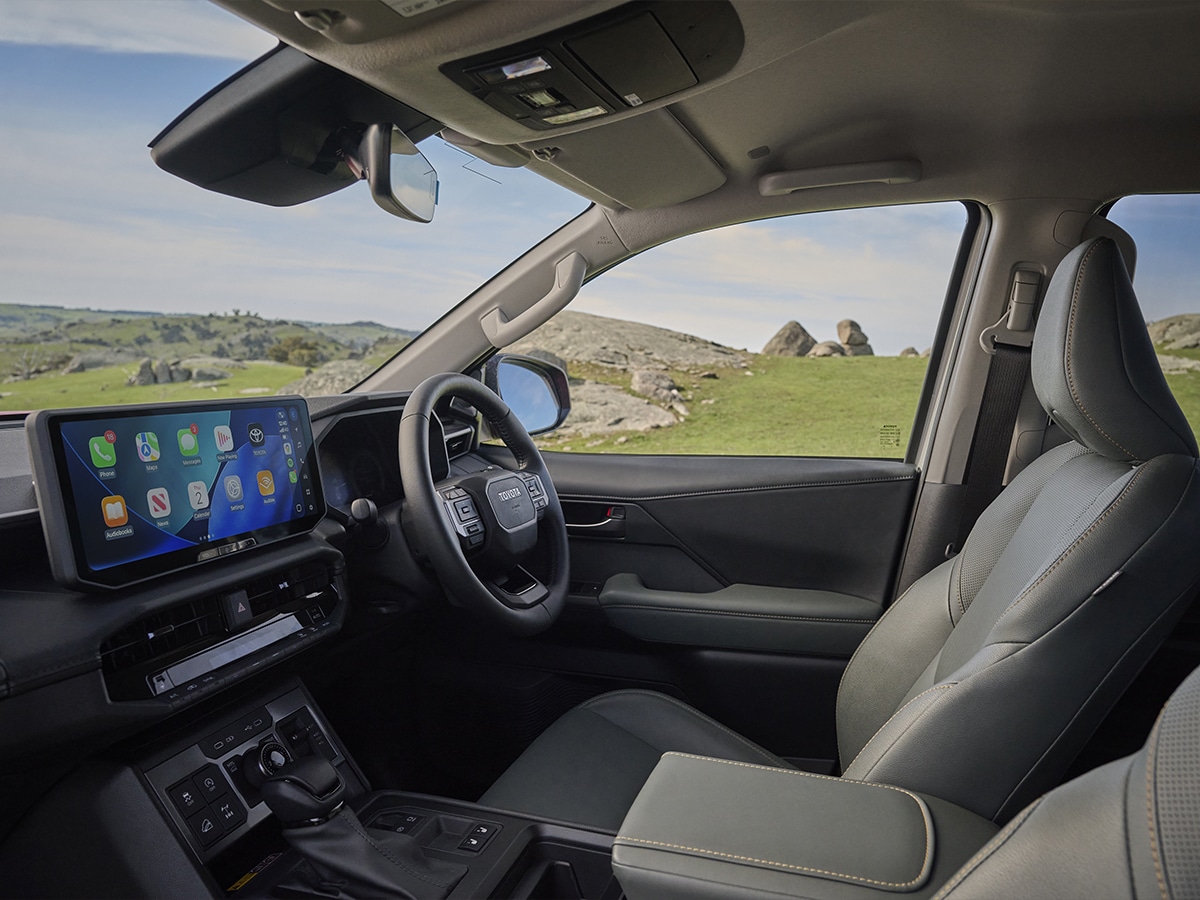
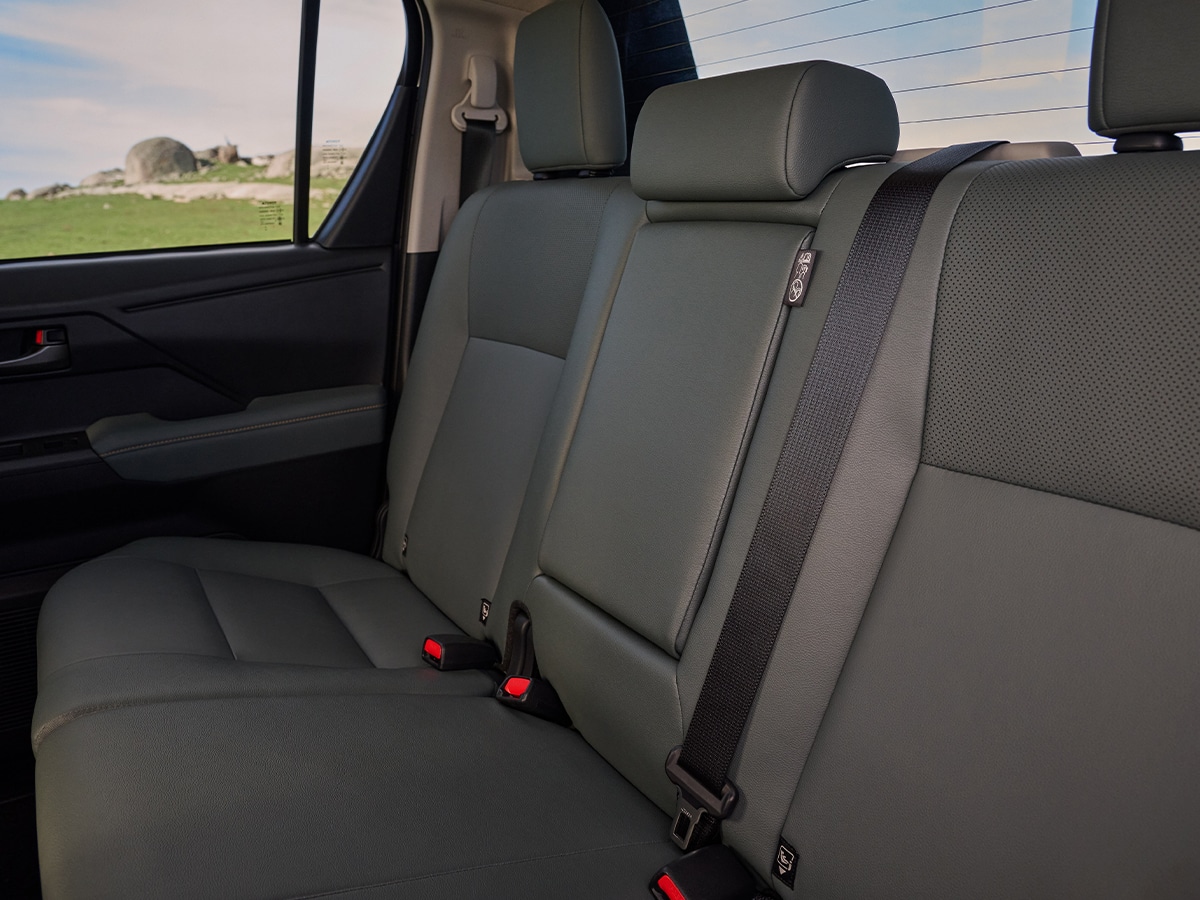
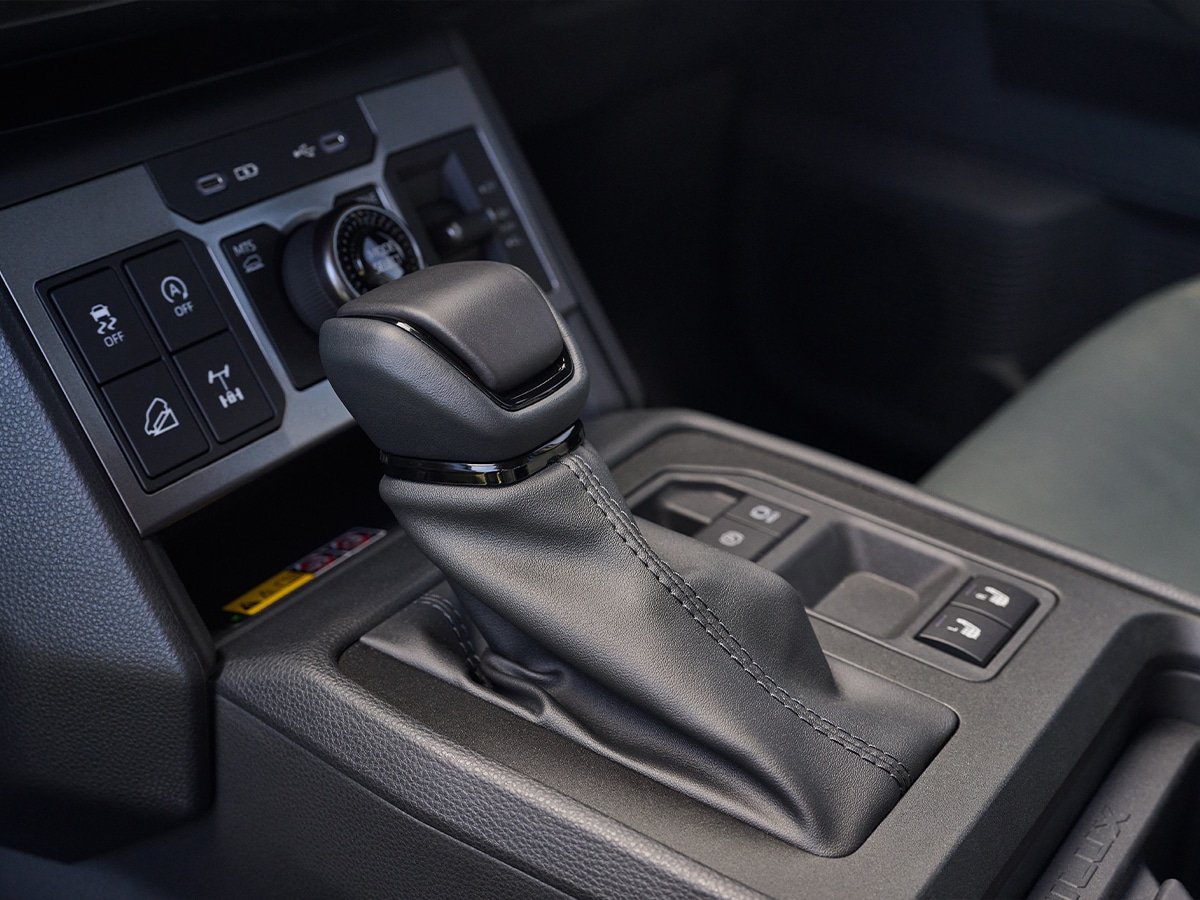
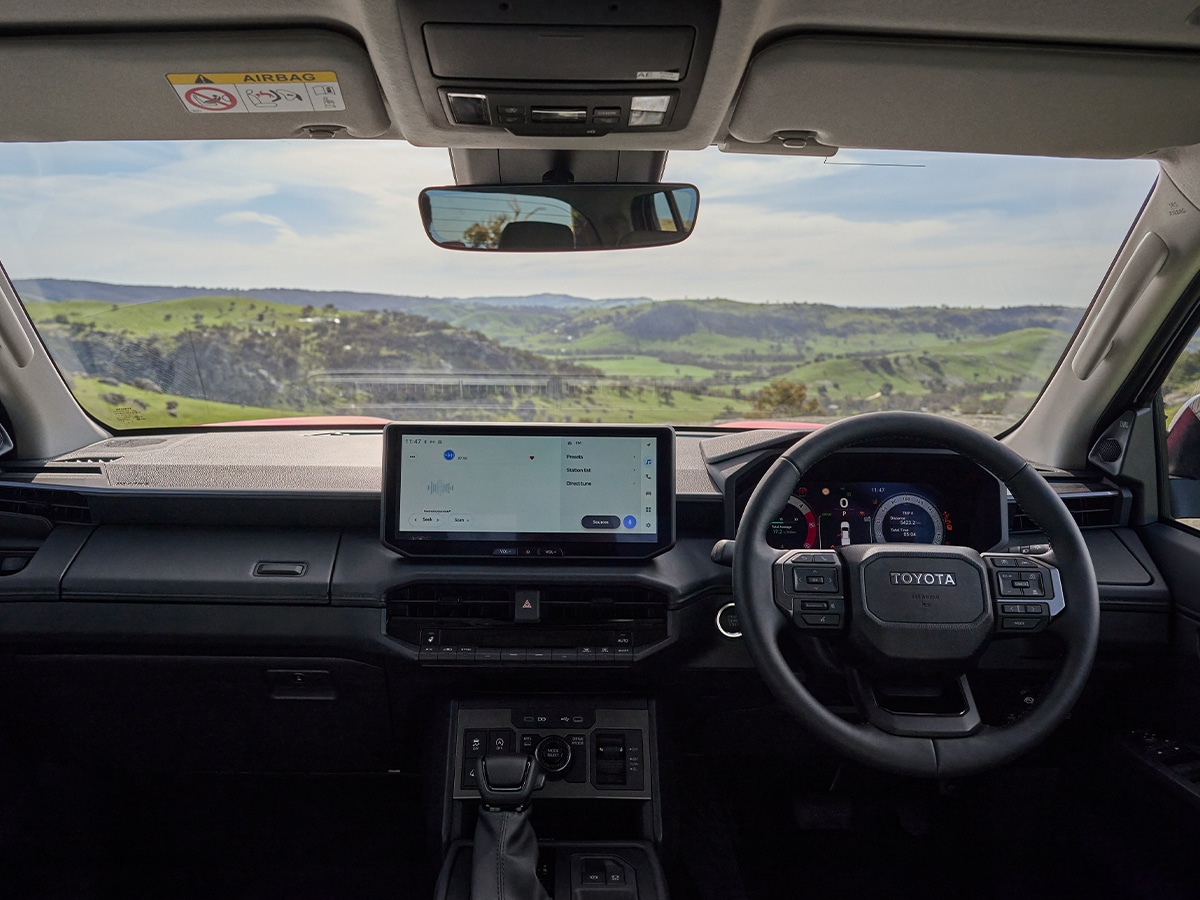
The response to the slowing sales of utes has been to reduce the number of HiLux models on offer, which now stands at 21 across different diesel variants in single, extra and double cab configurations, 4X2 or 4X4 drivelines, manual or automatic transmissions, and WorkMate, SR, SR5, Rogue and new Rugged X grades.
Standard across the line is a 12.3-inch touchscreen infotainment display situated above the centre console, featuring wireless Apple CarPlay and Android Auto, embedded satellite navigation, voice commands, and expanded Toyota Connected Services functionality. Paired with this new screen is a 12.3-inch digital instrument cluster on SR5 and above, and a 7.0-inch screen for WorkMate and SR grades.
Comfort has been improved with a broader and taller centre console that matches the height of the door armrest and can be slid forward. It’s situated next to newly developed front and rear seats, featuring an up to eight-way powered driver’s seat with lumbar support adjustment and leather-accented upholstery on higher-grade models.
Practicality remains a core focus of the HiLux, and plenty of physical buttons and knobs have been retained, positioned below the touchscreen infotainment screen, allowing the driver to keep their eyes on the road ahead. This also provides access to the new Multi-Terrain Select (MTS) traction control system on automatic SR 4×4 grades and above, as well as the Multi-Terrain Monitor on automatic double-cab pickup SR5 grades and above, which features numerous cameras positioned around the vehicle.
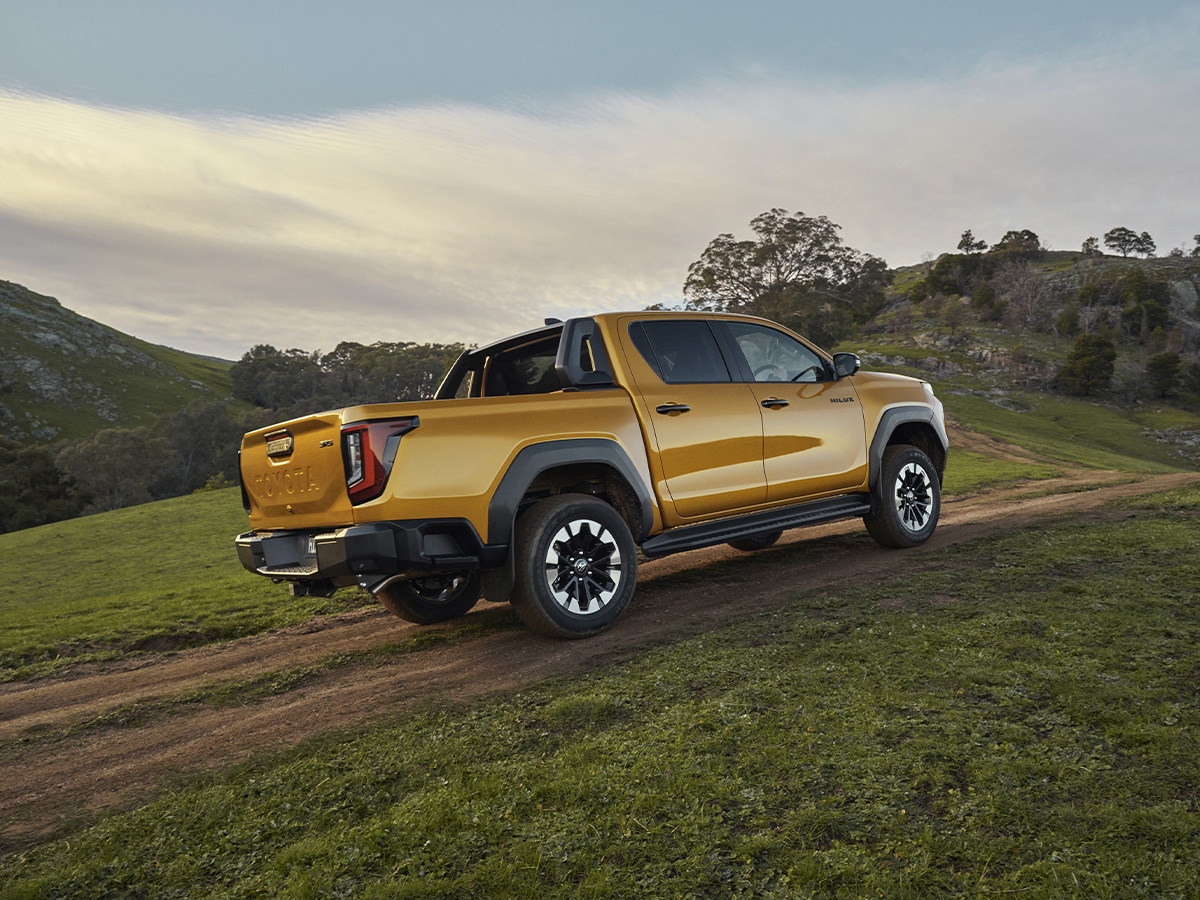
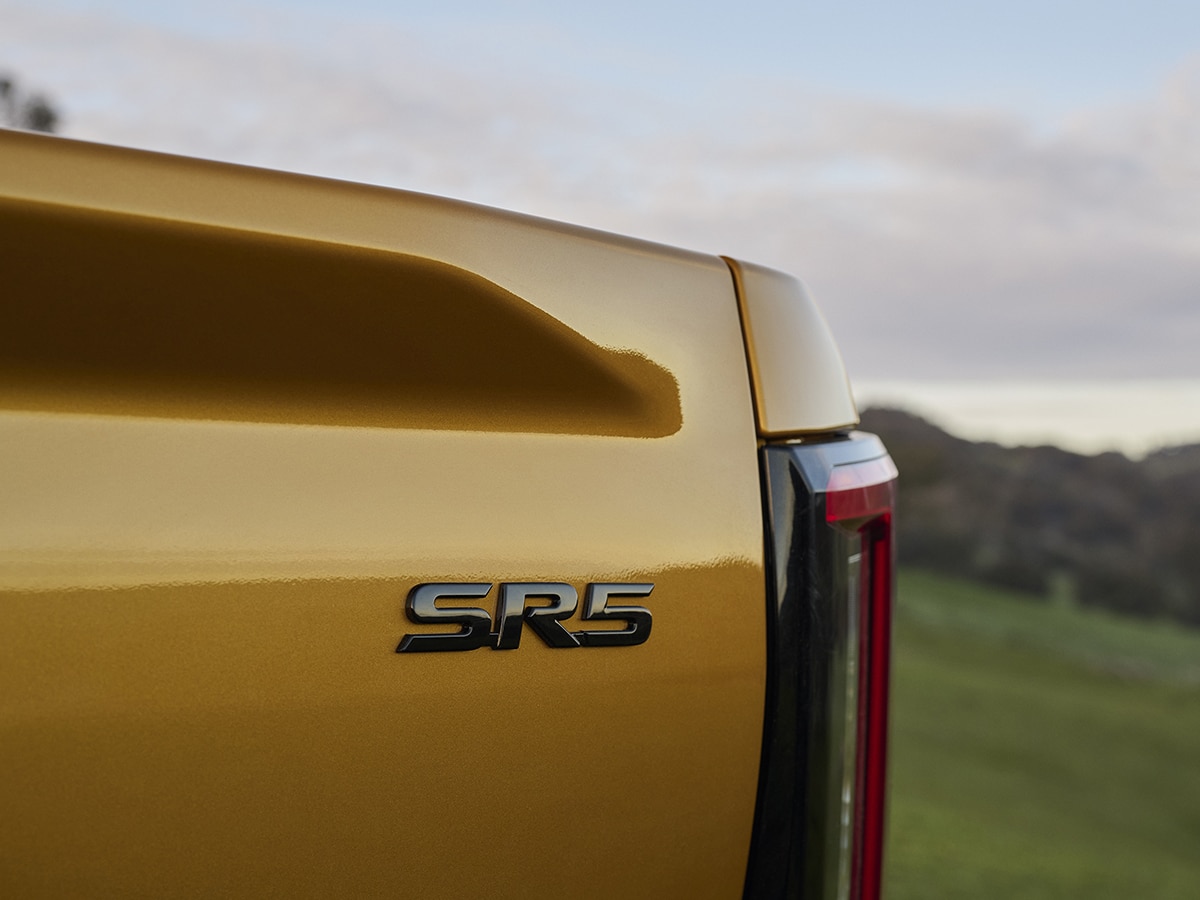
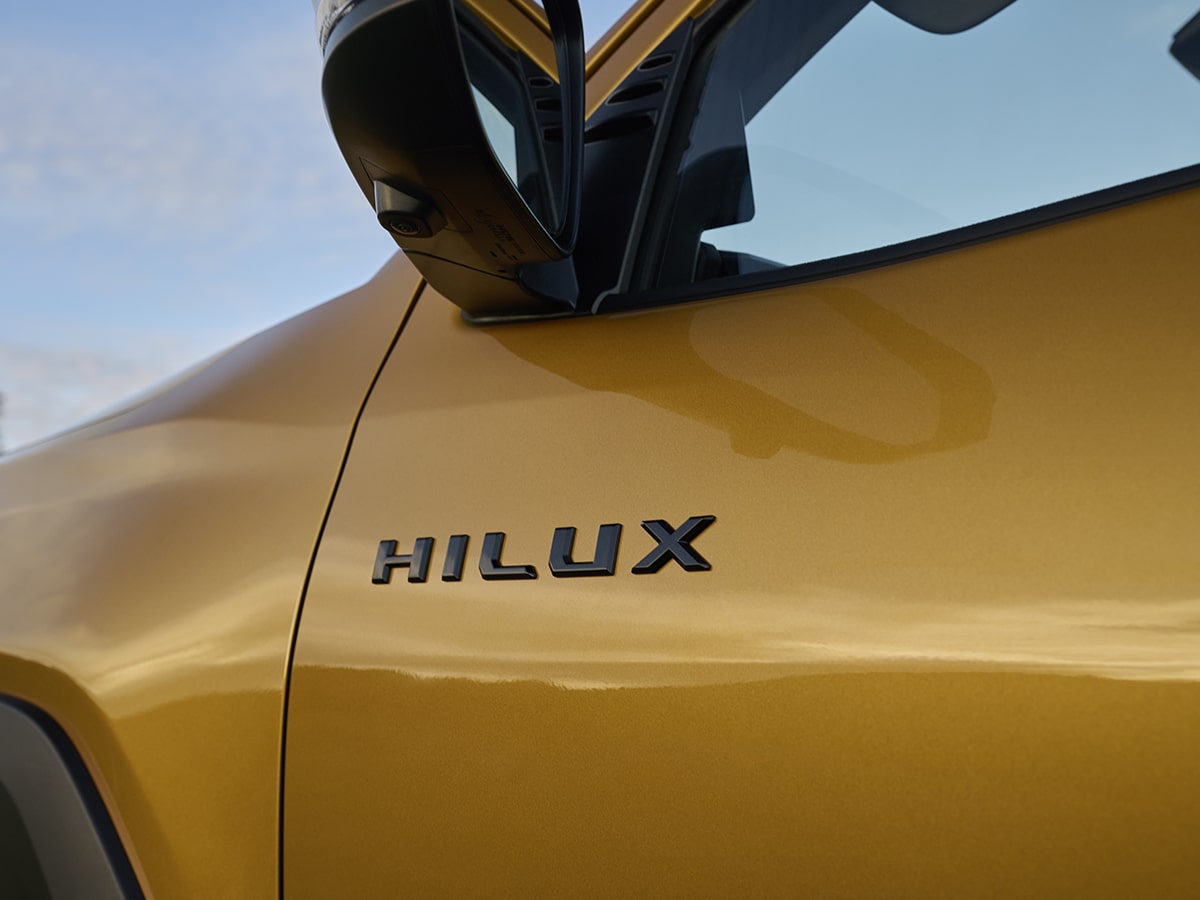
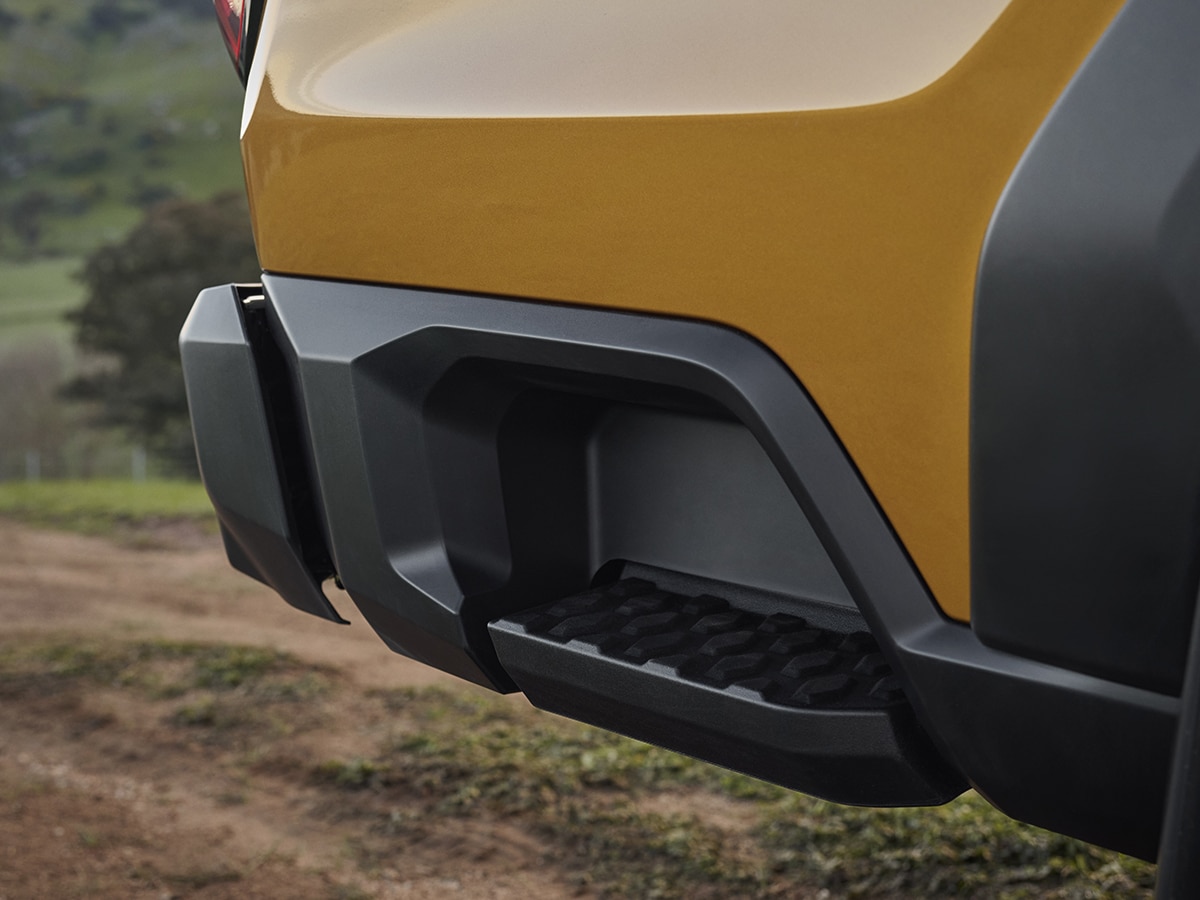
Every model grade in the range will be powered by the carry-over (1GD-FTV) 2.8-litre turbo-diesel four-cylinder engine, producing maximum outputs of 150kW of power and 500Nm of torque when paired with a six-speed automatic transmission. Note that models with the six-speed manual transmission develop a maximum 420Nm of torque.
To avoid paying hefty emissions bills with the introduction of NVES, the 48-volt V-Active technology will also be standard on automatic double-cab SR grades and above.
Beyond the emissions reductions, it offers a smoother stop-start function and an additional 8.5kW/65 Nm of torque when pulling away from a set of traffic lights. Those fleet and business customers who want to take their emissions reduction targets even further can choose the new dual-motor battery-electric powertrain for the HiLux, underpinned with an electric motor on each axle, paired with a lithium-ion battery, and due to arrive in showrooms in H1, 2026, in double-cab 4×4 SR and SR5 grades.
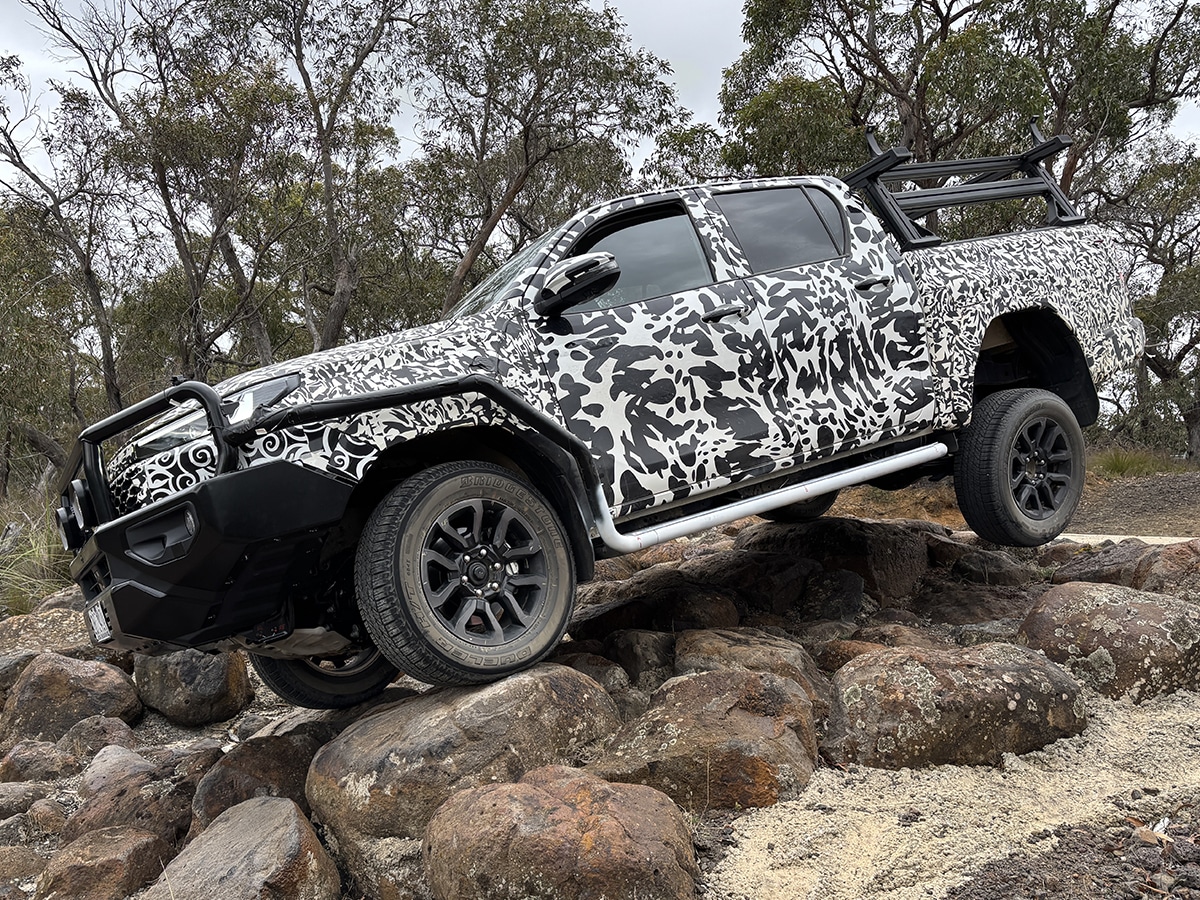
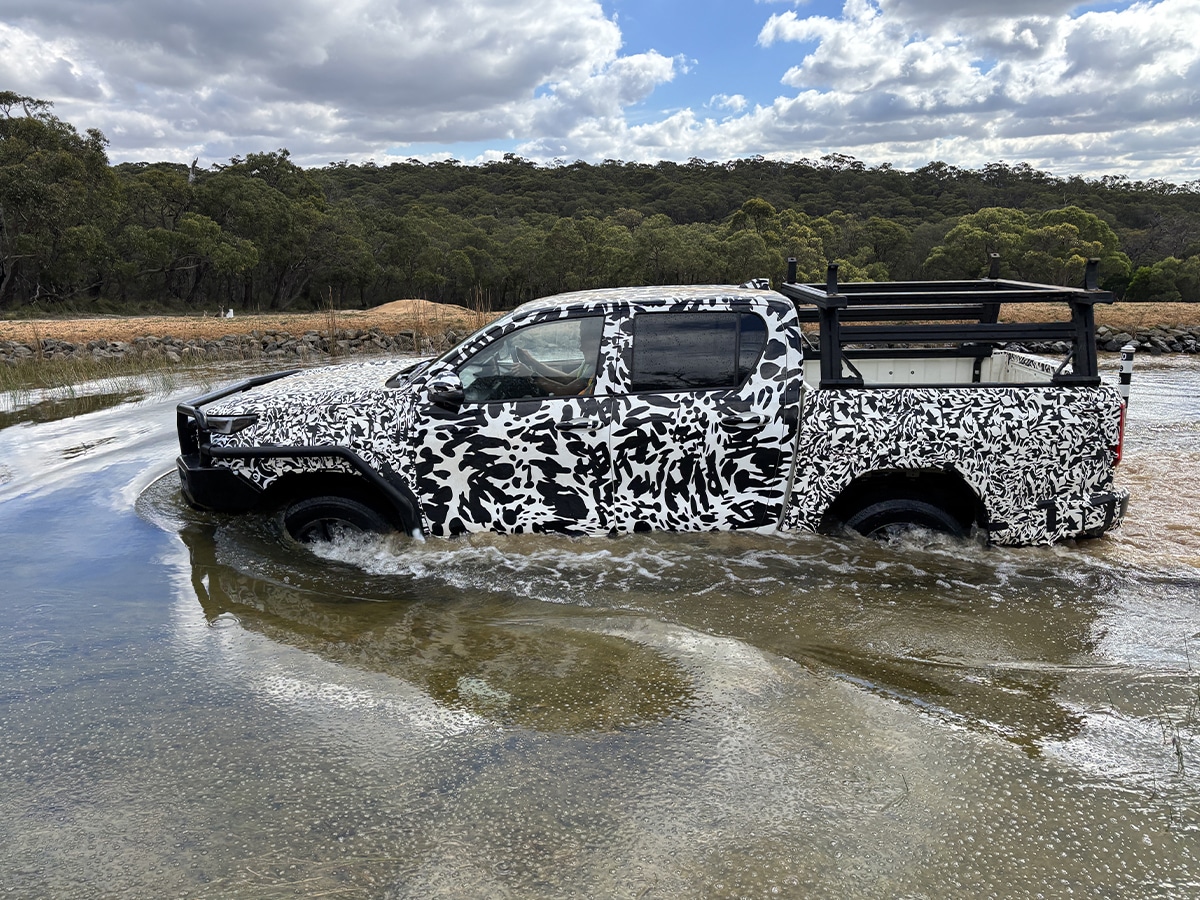
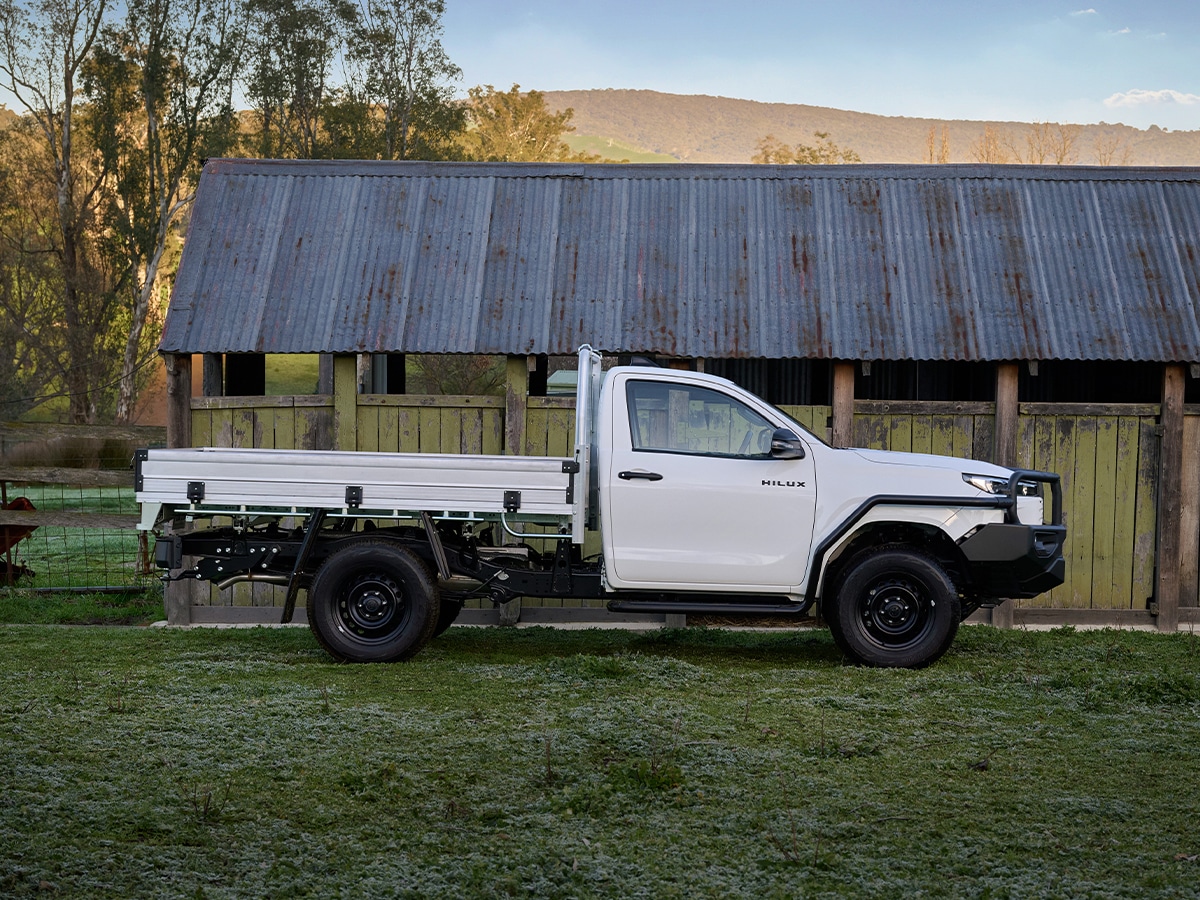
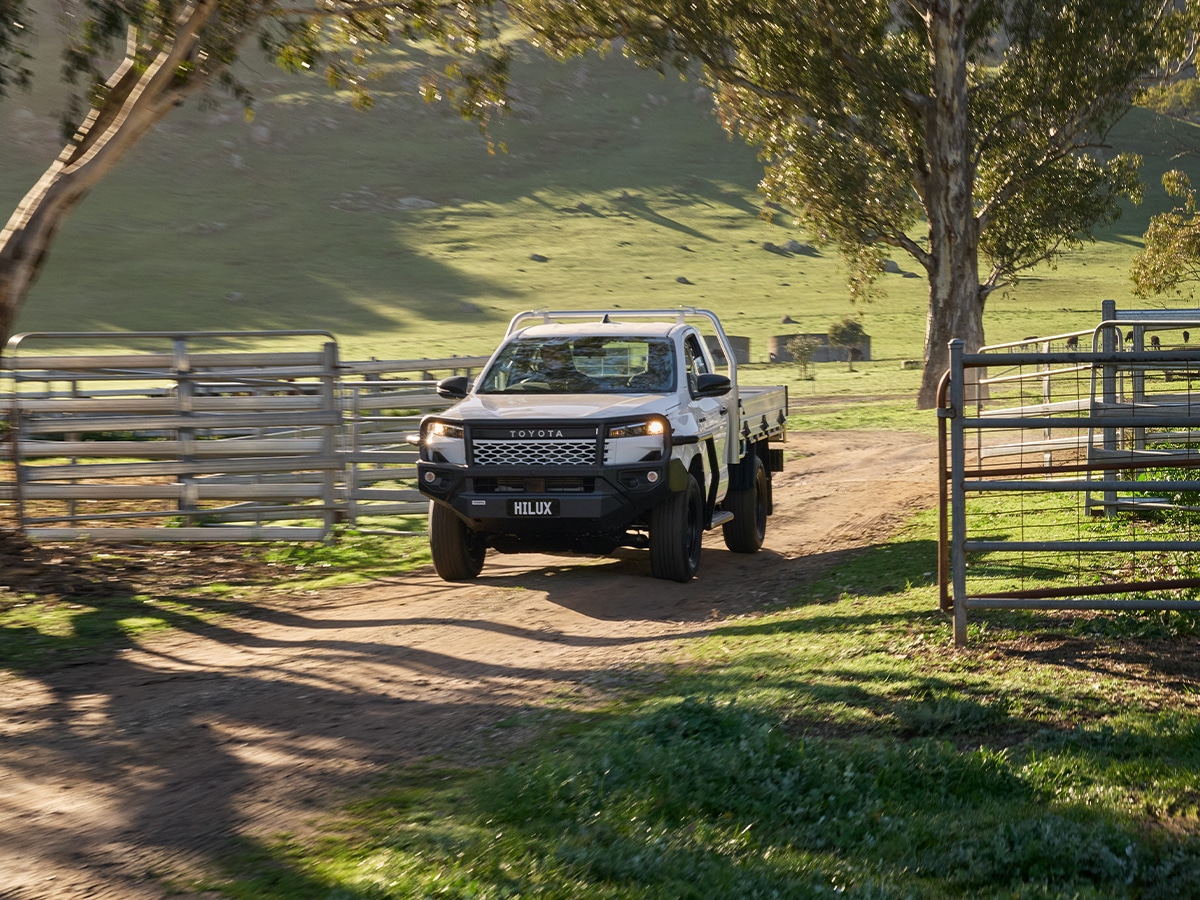
Electric power steering (EPAS) makes its debut in the HiLux line-up for the first time, enhancing drivability while also safeguarding the marque against the ever-tightening ANCAP standards by improving the functionality of the lane-keeping safety systems.
Other safety systems include pre-collision safety, autonomous emergency braking, active cruise control, lane departure alert, lane trace assist, road sign assist (speed signs only), auto high beam, blind spot monitor, rear cross-traffic alert, and, on pickup grades, front and rear parking sensors. Front rail extensions were added to enhance impact absorption, and the thickness of the front suspension tower has been increased to accommodate the new electric power steering.
We’re most excited about the two-tiered suspension tune option, which caters to either heavy-duty work or more comfort and adventure-oriented private use. While independent coil-sprung front and rigid axle leaf-sprung rear suspension is offered across the range, the WorkMate and SR grades feature a spring and shock tune optimised for heavy load carrying and towing. In contrast, the SR5 and higher grades utilise different spring rates and suspension strokes to provide enhanced ride comfort for everyday use.
2026 Toyota HiLux Price and Specifications
Here’s the updated, alphabetically ordered 2026 Toyota HiLux Price and Specs List — with all prices correctly matched to their relevant grades and features:
WorkMate
Price:
- 4×2 Single Cab-Chassis (MT) — $33,990
- 4×2 Single Cab-Chassis (AT) — $35,990
- 4×2 Double Cab Pick-Up (AT) — $47,990
- 4×4 Single Cab-Chassis (AT) — $45,990
- 4×4 Double Cab-Chassis (AT) — $52,490
- 4×4 Double Cab Pick-Up (AT) — $53,990
Standard Features:
- 1 x 12V accessory port (single cab)
- 2 x 12V accessory ports (double cab)
- 2 x USB-C ports
- 7.0-inch digital instrument cluster
- 12.3-inch centre touchscreen
- DAB digital radio
- Electric mirrors
- Fabric upholstery
- Four-speaker sound system (double cab)
- LED headlights
- Manual-adjust steering column
- Manual parking brake
- Satellite navigation
- Seventeen-inch steel wheels
- Toyota Connected Services with 12-month subscription
- Two-speaker sound system (single cab)
- Wireless Apple CarPlay and Android Auto
SR (adds or replaces)
Price:
- 4×2 Double Cab Pick-Up (AT) — $52,990
- 4×4 Extra Cab-Chassis (AT) — $54,990
- 4×4 Double Cab-Chassis (MT) — $54,990
- 4×4 Double Cab-Chassis 48V (AT) — $57,990
- 4×4 Double Cab Pick-Up 48V (AT) — $59,490
Additional Features
- ‘High grade’ fabric upholstery
- 17-inch alloy wheels
- Black door handles, side mirrors, bonnet inserts
- Eight-speaker sound system
- Keyless entry
- Leather-accented shift knob
- Leather-wrapped steering wheel
- LED front fog lights
- Locking rear differential (4×4 only)
- Locking rear tailgate
- Multi-Terrain Select (4×4 only)
- Push-button engine start
- Rear air vents
- Side steps
- Silver-painted front bumper
- Wireless smartphone charging
SR5 (adds)
Price:
- 4×4 Double Cab Pick-Up (MT*) — $63,990
- 4×4 Double Cab-Chassis 48V (AT*) — $64,490
- 4×4 Double Cab Pick-Up 48V (AT*) — $65,990
(*Premium Interior Pack optional — $2,500)
Additional Features:
- 18-inch alloy wheels
- All-weather floor mats
- Comfort-oriented leaf-spring rear suspension tune
- Cooled glove box
- Dual-zone automatic climate control
- Electro-chromatic rear-vision mirror
- Electronic park brake
- High-grade LED headlights
- Integrated tow bar
- LED rear fog light
- LED tail-lights
- Larger front brake discs (sizes TBA)
- Power-folding, heated exterior mirrors
- Privacy glass
- Sports bar
Rogue (adds)
Price:
- 4×4 Double Cab Pick-Up 48V (AT) — $71,990
Additional Features:
- 12V socket in-tray
- Central locking tailgate
- Deck rail with two sliding points
- Electric tray roller cover
- Marine-grade carpet bedliner
- Matte black 18-inch alloy wheels
- Mineral-coloured upholstery
- Rogue tailgate badging
- Towing package (tow-ball, tongue, trailer wiring harness, electronic brake controller)
- Unique front bumper design
- Unique sports bar
Rugged X (adds)
Price:
- 4×4 Double Cab Pick-Up 48V (AT) — $71,990
Additional Features:
- 18-inch alloy wheels
- Front and rear recovery points
- Hoopless bull bar
- LED light bar
- Rugged decal package
- Sports bar
Optional Extras
- Premium Paint: $675
- Premium Interior Pack (SR5 only): $2,500








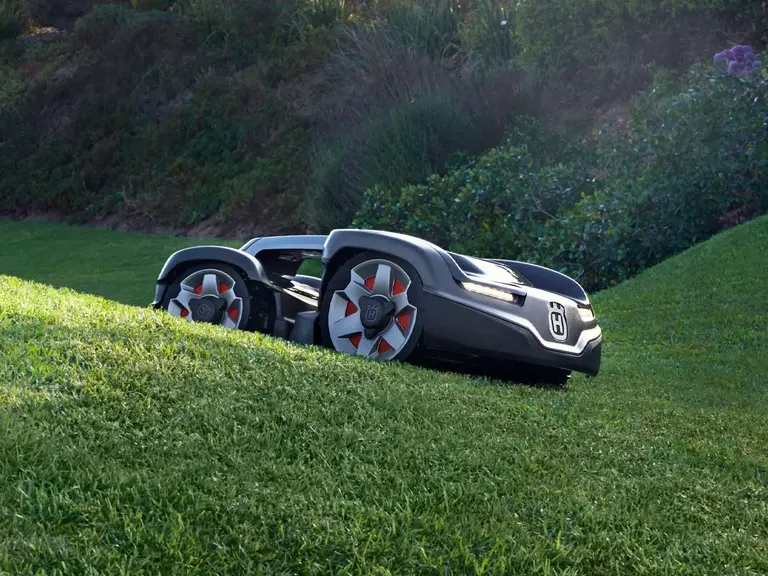






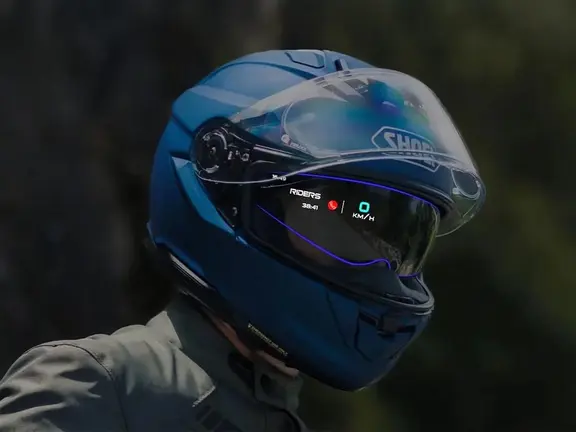



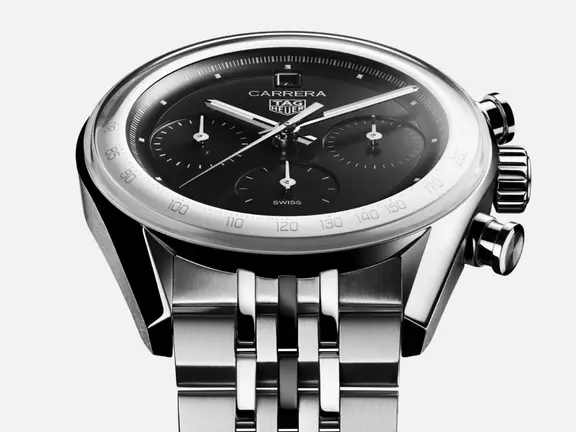














Comments
We love hearing from you. or to leave a comment.